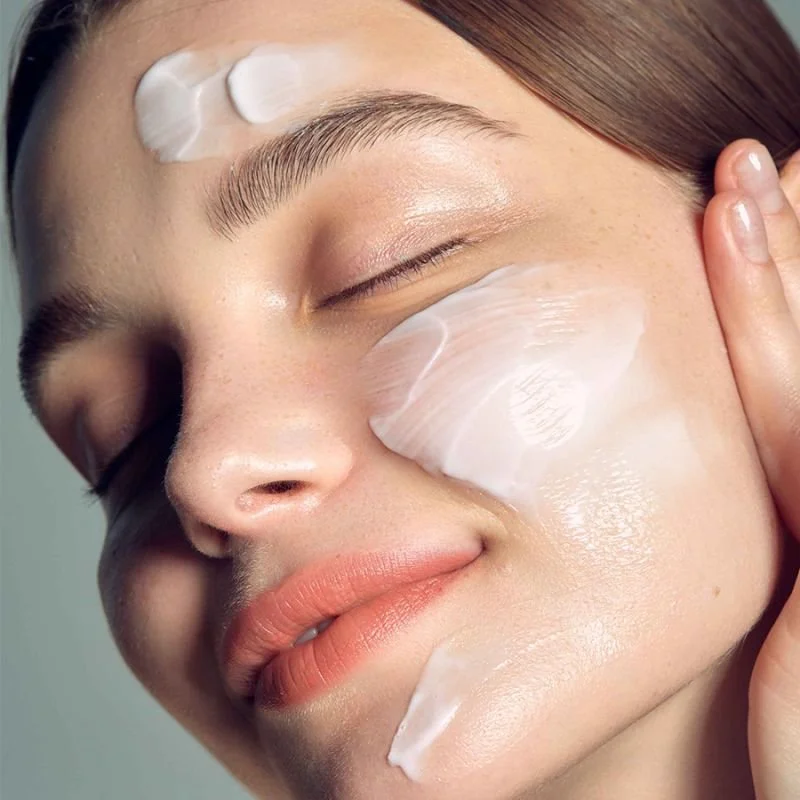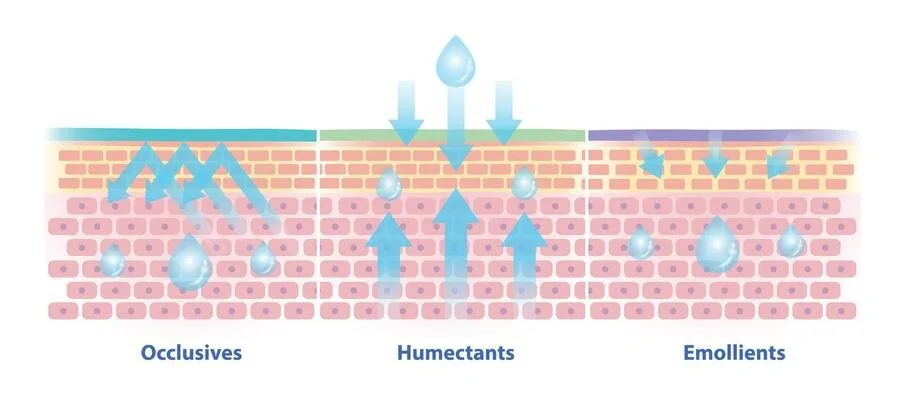How to Choose the Best Moisturizer for Your Skin: A Complete Guide
Moisturizers are a staple in any skincare routine, and it’s no wonder — they’re the key to keeping your skin hydrated, smooth, and healthy. But with so many options on the market, it’s easy to feel overwhelmed. Gel, cream, lotion, or milky formula? One packed with anti-aging actives, or a simple, nourishing option that just keeps your skin balanced?
If you’re unsure how to choose a moisturizer that truly supports your skin long-term, this guide is for you. Here, you’ll learn how to match the right texture and ingredients to your skin type, understand the difference between dry and dehydrated skin, and make confident choices that leave your complexion healthy, hydrated, and glowing.
Table of Contents:
Understanding Skin Hydration: Dry vs. Dehydrated
Key Ingredients in a Good Moisturizer
Ingredients to Avoid in Moisturizers
Extra Ingredients for Healthy Skin
Choosing the Right Texture for Your Skin Type
Final Recommendations and Product Guidance
Understanding Skin Hydration: Dry vs. Dehydrated
Hydration is all about keeping your skin plump, smooth, and healthy. It’s the process of maintaining the right balance of water in your skin cells so they can function properly, support elasticity, and protect against environmental stressors. Without proper hydration, skin can look dull, feel tight, or become more prone to irritation and fine lines.
Many people get confused between dry skin and dehydrated skin, and it makes sense — both can feel uncomfortable or look lackluster. The key difference is simple: dry skin lacks oils, which makes it feel rough or flaky, while dehydrated skin lacks water, which can affect any skin type, even oily or combination. Knowing this helps you pick the right moisturizer for your skin’s actual needs.
Key Ingredients in a Good Moisturizer
A moisturizer can feel silky, smell amazing, and still do very little for your skin if it’s missing the right ingredients. The real magic comes from what’s inside the jar or tube — not the packaging or the scent. Knowing the key players will help you choose a formula that truly hydrates and supports your skin long-term.
Humectants
These water-soluble ingredients help your skin attract and retain moisture. A particularly important group within humectants is the Natural Moisturizing Factors (NMFs) — compounds naturally found in the skin that play a crucial role in hydration.
Look for NMF-related ingredients like sodium PCA, urea, amino acids, lactic acid, as well as popular humectants like hyaluronic acid and glycerin. Together, they help maintain soft, plump, and hydrated skin.
Emollients
These are oil-soluble ingredients that sit in the outer layer of the skin, filling gaps between skin cells to help prevent moisture loss. The drier your skin, the more emollients it typically needs. Important emollients include skin-identical lipids like ceramides, cholesterol, and fatty acids, along with nourishing plant oils, squalane, and plant butters. These not only lock in hydration but also smooth and soften the skin.
Occlusives
These form a protective layer on the skin’s surface to slow down water loss. They’re especially important if your skin barrier is compromised or if you’re dealing with dryness. Natural occlusives like shea butter and beeswax are gentle and nourishing options.
Note: While mineral oils are still widely used and considered effective by many brands, research suggests they may negatively impact skin health, especially when the barrier is already weakened. For this reason, choosing natural occlusives is often a safer, more skin-friendly choice.
Putting it together: If your moisturizer contains humectants — ideally including some NMF components like sodium PCA, urea, or hyaluronic acid — plus emollients and occlusives like plant oils, squalane, or plant butters, and avoids alcohol, fragrance, and essential oils, you already have a solid, basic moisturizer that supports healthy, hydrated skin.
Ingredients to Avoid in Moisturizers
Not all ingredients in moisturizers are created equal. Some can give your skin a nice immediate feel but may cause problems over time, especially if you’re aiming for long-term hydration and healthy skin. To make sure your moisturizer truly supports your skin, it’s best to avoid a few common culprits:
Alcohol (INCI: Alcohol, Denat. Alcohol, Ethanol)
Can feel pleasant and help products absorb faster, but over time it dries out skin, weakens the protective barrier, and may cause irritation. Common in lightweight gels or fast-absorbing creams.
Fragrance & Perfume (INCI: Parfum, Fragrance, Citral, Limonene, Linalool, Citronellol)
Unnecessary and a common cause of irritation or allergic reactions. Many fragrances oxidize over time, increasing sensitivity.
Essential Oils (examples: citrus oils, lavender, menthol, jasmine, eucalyptus)
Smell nice and may have minor antioxidant benefits, but most act like fragrance and can irritate, especially for sensitive skin.
Choosing a moisturizer free of alcohol, fragrance, and essential oils helps maintain gentle, long-term hydration and keeps your skin calm, resilient, and healthy.
Extra Ingredients for Healthy Skin
If you want more than just basic hydration, look for moisturizers that include extra ingredients to support overall skin health. These can benefit any skin type and help your skin stay balanced, calm, and resilient.
Antioxidants
Fight free radicals and protect against environmental damage like UV exposure and pollution. They also reduce inflammation and help slow down visible signs of aging. Key antioxidants to look for include Vitamin C, Vitamin E, Green Tea, Resveratrol, Ferulic Acid, Superoxide Dismutase, and Coenzyme Q10 (Ubiquinone). For maximum effectiveness, choose products in air-tight, opaque packaging to prevent oxidation.
Cell-Communicating Ingredients
These ingredients help your skin cells function properly, improving repair, regeneration, and overall skin performance. Examples include niacinamide, retinol, peptides, and adenosine. They’re particularly useful if you’re targeting aging, pigmentation, or acne.
Anti-Inflammatory Ingredients
Reduce redness, irritation, swelling, and sensitivity, supporting the skin’s natural barrier. Look for Adenosine, Allantoin, Aloe Vera, Green Tea, Licorice Extract, and Chamomile Extract. These are especially beneficial for sensitive or rosacea-prone skin or skin recovering from irritation.
Choosing Extras by Skin Concern
Smart-aging: antioxidants + targeted ingredients like retinoids or peptides
Acne-prone skin: antioxidants + niacinamide or retinoids
Sensitive skin: anti-inflammatory ingredients
By picking a moisturizer with these extra components, you can go beyond basic hydration and help your skin stay healthy, calm, and resilient every day.
Choosing the Right Texture for Your Skin Type
The texture of your moisturizer matters almost as much as its ingredients. Not every skin type benefits from a rich, creamy formula, even at night. Instead of choosing products based on age, focus on your skin type and concerns. For example, many anti-aging creams marketed for older skin are rich and heavy. If your skin is combination or prone to shine, a thick cream won’t necessarily work—even if you’re 45+.
Recommended textures by skin type:
Dry skin: Look for moisturizers rich in emollients. These are usually creamier, heavier textures that deeply nourish and lock in moisture. If your dryness is mild or you use facial oils, lighter lotions can also work.
Normal skin: You have flexibility. Adjust by season: richer creams in winter, lighter lotions or gel-creams in summer.
Combination skin: Opt for lighter textures like gel-creams or lotions that hydrate without adding excess oil.
Oily skin: Stick to ultra-lightweight options such as gels or light lotions to keep skin balanced and non-greasy.
Choosing the right texture helps your skin feel comfortable, hydrated, and fresh—so you get the benefits of your moisturizer without feeling weighed down or greasy.
Final Recommendations and Product Guidance
Choosing the right moisturizer doesn’t have to be complicated. In this section, I’ve gathered some of the best Korean moisturizers that I recommend, selected for their quality ingredients, effectiveness, and ability to keep your skin healthy and hydrated. These products are suitable for a variety of skin types and concerns, so you can feel confident finding one that fits seamlessly into your routine.
1. Dry Skin
Recommended Texture: Creamy, rich, or heavier lotions
Key Ingredients to Look For: Emollients, occlusives, humectants, anti-inflammatory ingredients
Purito Seoul Dermide Relief Barrier Moisturizer is rich in ceramides, nourishing oils, and shea butter, providing deep hydration and strengthening the skin barrier.
Mary&May Idebenone Blackberry Intense Cream is perfect for dry skin that’s showing signs of aging, deeply hydrating while ceramides strengthen the barrier and Idebenone helps smooth fine lines.
2. Normal Skin
Recommended Texture: Flexible (cream, gel-cream, or lotion)
Key Ingredients to Look For: Balanced hydration, antioxidants, light emollients
ROUND LAB Birch Juice Moisturizing Cream keeps normal skin balanced and comfortable by hydrating with Glycerin and Hyaluronic Acids, soothing with Panthenol and Aloe, and protecting with antioxidants like Birch sap, Turmeric, and Vitamin C.
3. Combination Skin
Recommended Texture: Gel-creams, lighter lotions
Key Ingredients to Look For: Humectants, oil-controlling ingredients, soothing botanicals
Anua PDRN Hyaluronic Acid 100 Moisturizing Cream is lightweight enough for oilier areas but deeply hydrates dry patches, making it ideal for combination skin, while Centella soothes and Niacinamide with PDRN helps repair and calm stressed or acne-prone areas.
ma:nyo Bifida Biome Aqua Barrier Cream is another great option for combination skin, giving lightweight hydration to dry patches while Bifida Ferment, Centella, and Ceramides help repair and strengthen your skin barrier.
4. Oily Skin
Recommended Texture: Gels, light lotions, water-based formulations
Key Ingredients to Look For: Sebum-regulating ingredients, antioxidants, humectants
Beauty of Joseon Red Bean Water Gel is perfect for oily skin, providing lightweight, water-based hydration, helping control excess sebum with Red Bean Extract, and supporting skin health with soothing ingredients like Panthenol, Allantoin, and Beta-glucan.
Benton Aloe Propolis Soothing Gel is a lightweight gel-cream that’s perfect if your skin feels sensitive or irritated, gently calming and hydrating with Oat Seed Water, Panthenol, and Beta-glucan, while being hypoallergenic and non-comedogenic.
5. Sensitive or Irritated Skin
Recommended Texture: Lightweight creams or lotions
Key Ingredients to Look For: Anti-inflammatory, calming ingredients, fragrance-free
Purito Seoul Oat In Calming Gel Cream is a lightweight, soothing gel-cream that’s perfect if your skin feels sensitive or irritated, gently calming and hydrating with Oat Seed Water, Panthenol, and Beta-glucan without clogging pores.
Dr.G Red Blemish Clear Soothing Cream is a lightweight cream designed for acne-prone or redness-prone skin, soothing irritation and reducing blemish marks with Centella, Madecassoside, and Panthenol, while probiotics and Niacinamide strengthen and balance the skin.
Summary
Finding the right moisturizer is all about supporting your skin’s natural hydration and choosing formulas that match your skin type and concerns. Look for products with a balance of humectants and emollients, and consider extras like antioxidants, anti-inflammatory, or cell-communicating ingredients if your skin needs a boost. Avoid harsh alcohols, fragrances, and essential oils that can irritate or dry out your skin.
A well-chosen moisturizer in K-beauty routines not only keeps your skin nourished but also enhances the effects of the other products you use, supporting healthy, smooth, and glowing skin—the essence of the coveted glass skin look.



